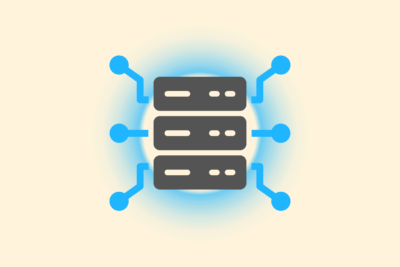Link building in an LLM era: still relevant?

Link building in an LLM era is an important topic as AI search engines such as ChatGPT, Claude, Gemini and Perplexity fundamentally change how people find information.
Generative search results provide direct answers, without lists of links as we know them from Google. In that landscape, a logical question arises: does link building still play a role? Or are backlinks losing their value in a world where language models understand context without depending on the link network?
Link building has certainly not disappeared, but it has adapted to the reality of LLMs. It is still relevant precisely because it bridges classic SEO signals and new forms of online authority.
Link building in the traditional SEO context
Within traditional search engine optimization, link building was the backbone of authority for many years. If trusted websites referred to your page, Google saw that as a signal of quality. That sum made for better positions in search results. Thereby, the origin, relevance and context of the link was essential, but volume was also driven a lot.
Meanwhile, that approach has given way to a more sophisticated one. Not only because of stricter guidelines from Google, but also because of the advent of AI systems that process information in a very different way. (1)
How LLMs deal with links
A Large Language Model does not read an index like a search engine does. Such a model processes language based on semantics, patterns and source citations in training data or live Web feeds. What is striking: LLMs name sources if they are sufficiently relevant, reliable and consistent. But the importance of a link is no longer in the hyperlink itself. What matters is the content context in which that link is cited.
I see with systems like Perplexity, Bing Copilot and Gemini, that they still reference pages. Not based solely on technical factors, but based on how valuable and clear the content is within a given topic. In this, link building still plays an indirect role.
Link building is increasingly shifting from quantity to content. Where I used to need dozens of links to build authority, I now work on content visibility through editorial referrals. Think mentions in industry-related articles, niche blogs, podcasts, interviews or expert pages.
So I don’t place links on home pages and don’t do link exchanges, but positioning in places where context matters.
That approach helps LLMs link my name, brand or domain to specific topics. Not necessarily through clickable links, but also through textual mentions. AI models recognize those patterns and incorporate them into how they assess, structure and use content in their responses.
Digital PR and branding without a link
What I am increasingly using is digital PR with the goal of being mentioned within influential publications, even if there is no link to it. Brand names, author mentions or expert citations all contribute to online presence in a topic. This strengthens topical authority and thus the likelihood of visibility within generative search results.
An important insight here is that LLMs understand content associatively. If my name consistently recurs in conjunction with certain themes, it increases credibility, even without a backlink. (2)
Getting started with SEO? Feel free to get in touch.

The role of link building within Google’s SGE
Although much attention is focused on external AI systems such as ChatGPT or Claude, Google remains a dominant player for now. And within Google’s own Search Generative Experience (SGE), classic SEO still plays along. Pages that rank well in organic results are also used as input for AI answers. In that, link building is still a measurable signal.
On the one hand, I build content suitable for direct processing by LLMs. On the other hand, I provide a natural link profile that supports the content in indexation, relevance and reliability within the search engine itself.
My approach in practice
I focus on substantive links from relevant publications, guest posts or collaborations within the field. In doing so, I consciously choose platforms that already have authority themselves. No quick links, but sustainable mentions that add value. In addition, I monitor via tools such as Perplexity and Poe whether the content shows up in AI responses. That way I know whether the chosen strategy is paying off outside of Google.
Another thing I see: once content is used as a source in an AI system, it increases the likelihood of reuse. A good mention leads to more visibility, which in turn can lead to new links or mentions.
With the right approach, valuable link building becomes part of a broader authority strategy.
Summary
Link building has not disappeared in the LLM era; it has changed. It is no longer about link exchanges or volume, but about content, context and reliability. Quality mentions in the right environment help not only with classic rankings, but also with visibility in AI responses.
Those who bet on content authority today will strengthen their position in both worlds. Not by optimizing for algorithms, but by creating content that benefits both people and models.
| # | Source | Publication | Retrieved | Source last verified | Source URL |
|---|---|---|---|---|---|
| 1 | Modern link building starter guide (Search Engine Land) | 06/09/2023 | 06/09/2023 | 13/10/2025 | https://searchengineland.. |
| 2 | AI Mentions: How to Get LLMs to Mention Your Brand (Semrush Blog) | 29/07/2025 | 29/07/2025 | 28/10/2025 | https://www.semrush.com/.. |
- Kevin Rowe. (06/09/2023). Modern link building starter guide. Search Engine Land. Retrieved 06/09/2023, from https://searchengineland.com/modern-link-building-starter-guide-431548
- Handley, R., Skopec, C., & Lahey, C. (29/07/2025). AI Mentions: How to Get LLMs to Mention Your Brand. Semrush Blog. Retrieved 29/07/2025, from https://www.semrush.com/blog/ai-mentions/






